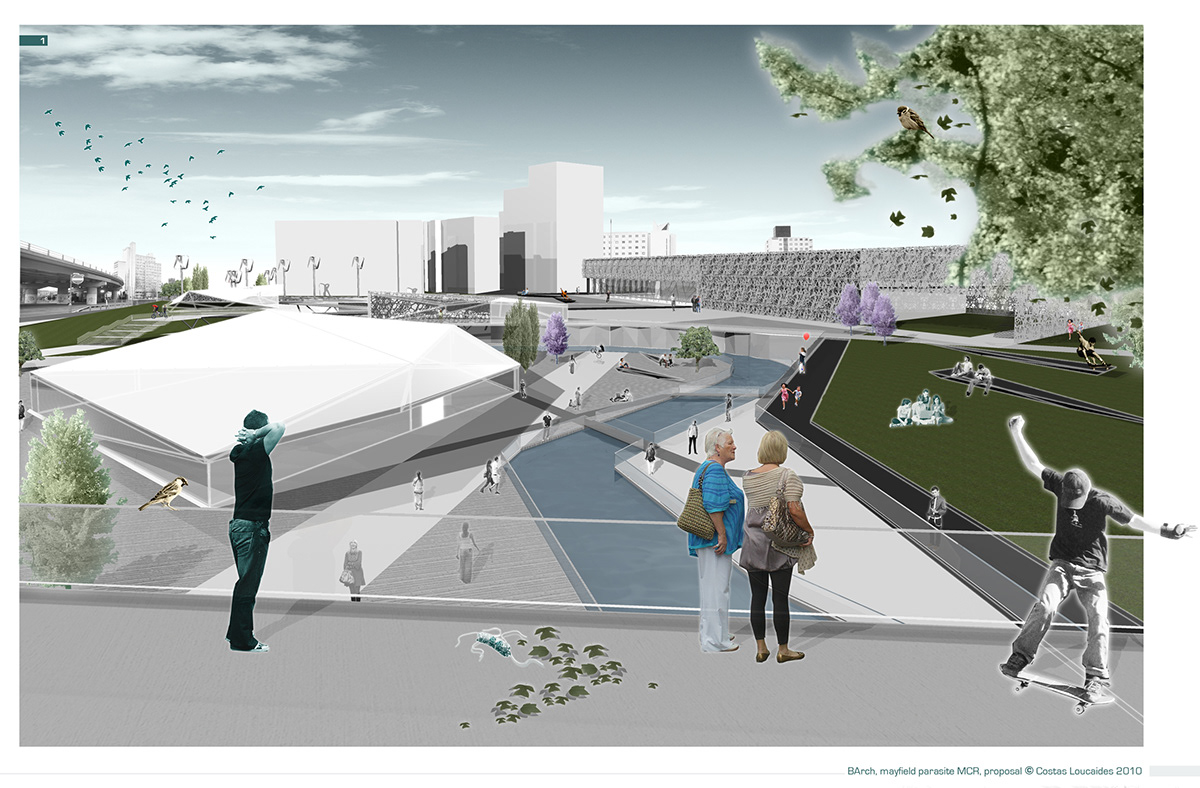
Mayfield Parasite MCR | Manchester - UK
a biomimetic approach to urban regeneration BArch 2009-2011 | Biomimetics
a biomimetic approach to urban regeneration BArch 2009-2011 | Biomimetics
Mayfield Parasite MCR is the investigation and development process of the degree thesis. The investigation aims to set-up a series of biomimetic rules that could, or could not, assist in regeneration of deprived areas in large urban environments. In this process the city is analysed over time, and a pattern of changes is isolated together with their causes and results. This pattern is then translated into a Natural system, or group of systems, and a biomimetic response is nurtured. According to the past, the present and the anticipated future this response is further cultivated so as to create a new environment best suited to its host; drawing energy from its surroundings and only viable at that specific location. This investigation aspires to create a prototype set of rules that could be used at each different urban environment, to create an individual reaction and therefore an individual and specific system.

Manchester [meso] analysis
Three samples of maps were used to study the pattern of changes occurring in Manchester [meso] at three different time periods, concentrating on industry, services, education and trading. The activities were considered as parasitic; activities that catalysed certain reactions that could benefit, or not, the host forming a mutualistic relationship. Over time these parasitic activities can either benefit both parasite and host, and thrive, or harm one of the two and disintegrate. The use of parasites was due to their evolutionary advantage to have a rapid regeneration rate and easily adapt to changing conditions, therefore be an exemplar if the activity could survive or not.
Three samples of maps were used to study the pattern of changes occurring in Manchester [meso] at three different time periods, concentrating on industry, services, education and trading. The activities were considered as parasitic; activities that catalysed certain reactions that could benefit, or not, the host forming a mutualistic relationship. Over time these parasitic activities can either benefit both parasite and host, and thrive, or harm one of the two and disintegrate. The use of parasites was due to their evolutionary advantage to have a rapid regeneration rate and easily adapt to changing conditions, therefore be an exemplar if the activity could survive or not.

Manchester [micro] analysis
Depriving areas of an otherwise healthy host were then isolated to be further analysed in order to become healthy new systems of a broader ecosystem. The history and function of the buildings was researched,together with social, cultural and economic reasons for the malfunctioning of the area. The outcome starts to become more visible with the gain of energy from the surrounding environments, their activities, advantages and disadvantages. In other words, the unhealthy part starts to draw energy from its surroundings in the process of revitalising and evolving its functions and environment.
Depriving areas of an otherwise healthy host were then isolated to be further analysed in order to become healthy new systems of a broader ecosystem. The history and function of the buildings was researched,together with social, cultural and economic reasons for the malfunctioning of the area. The outcome starts to become more visible with the gain of energy from the surrounding environments, their activities, advantages and disadvantages. In other words, the unhealthy part starts to draw energy from its surroundings in the process of revitalising and evolving its functions and environment.

biomimetic approach
A set of soil micro-organisms is identified that comprise certain characteristics recognised to have a beneficial role in the re-development of the area. These micro-organisms are analysed in terms of their life characteristics, growth pattern, physical form, aspired urban function and are then translated into an architectonic proposal for individual responsibilities within the masterplan progression.
A set of soil micro-organisms is identified that comprise certain characteristics recognised to have a beneficial role in the re-development of the area. These micro-organisms are analysed in terms of their life characteristics, growth pattern, physical form, aspired urban function and are then translated into an architectonic proposal for individual responsibilities within the masterplan progression.

concept applications of prototype


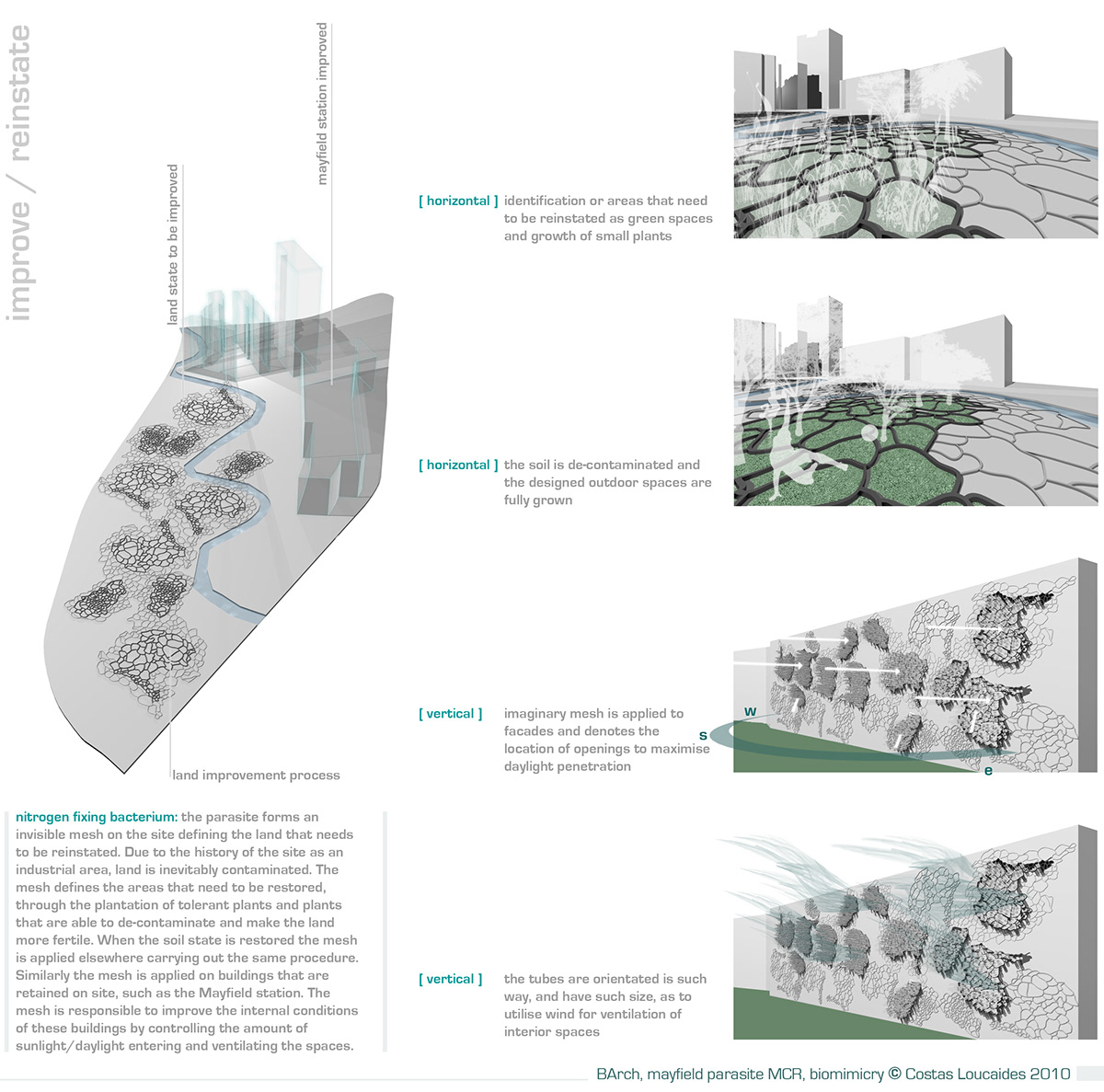
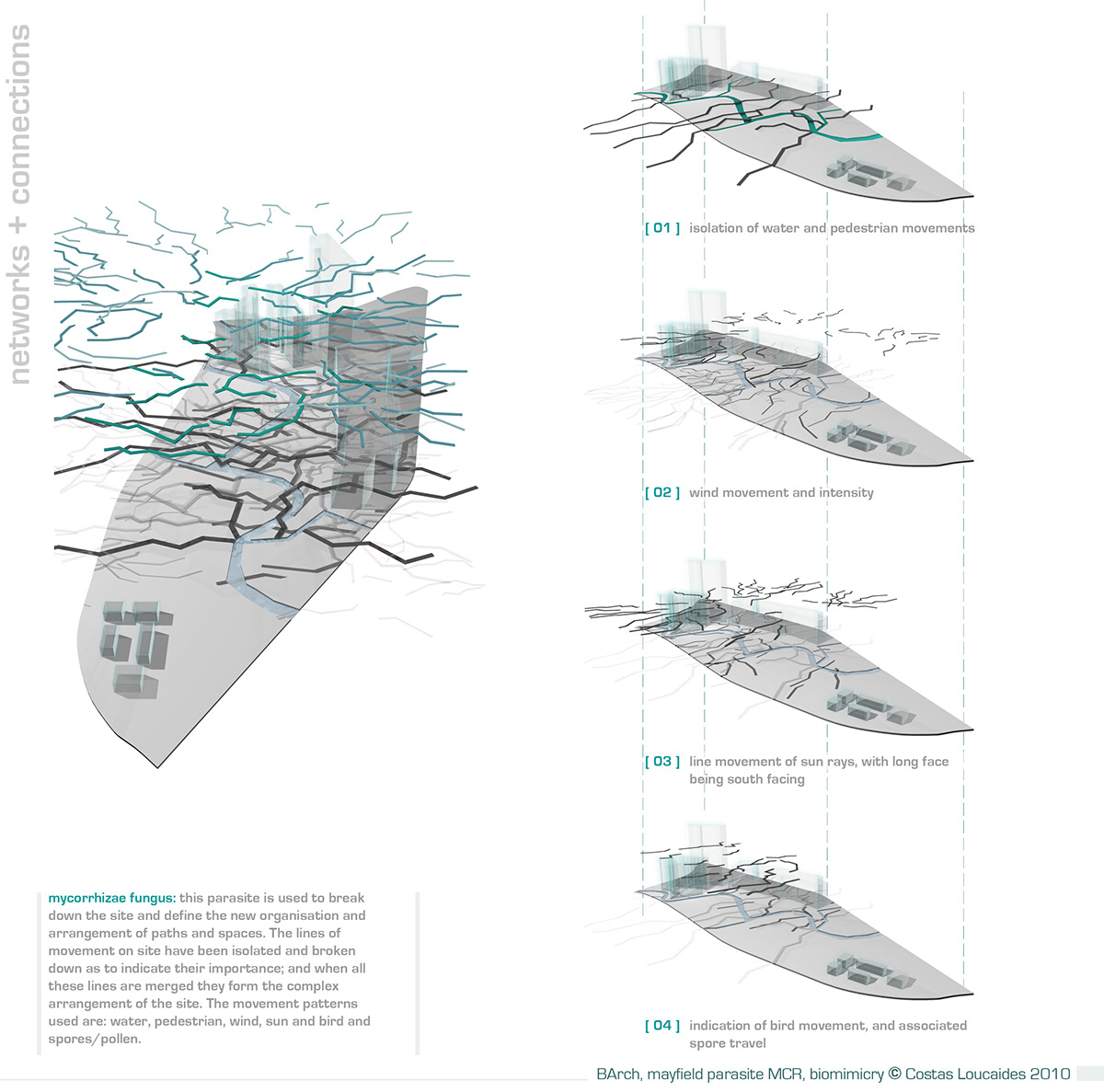
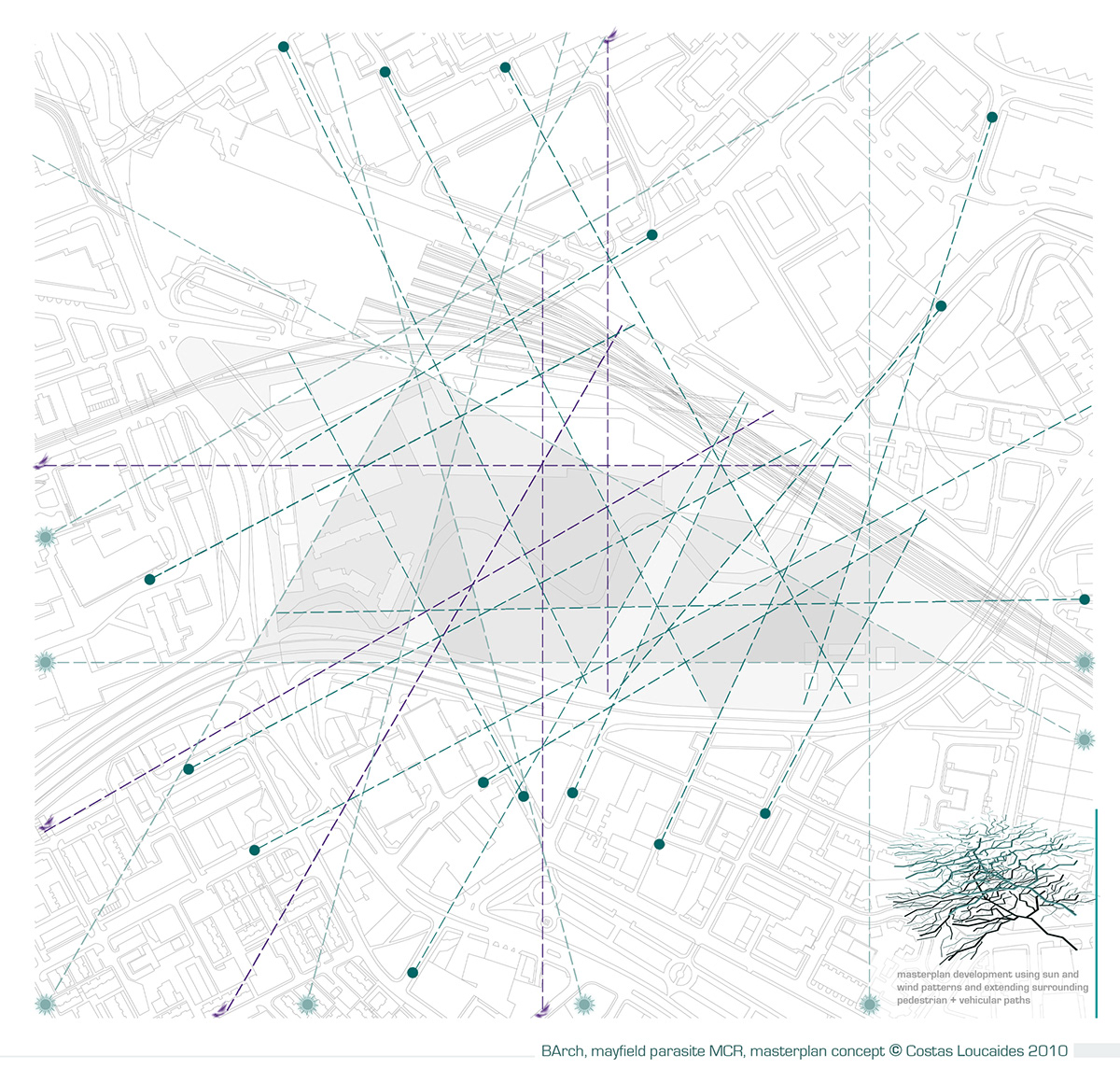
masterplan concept
The master-planning of the area uses its surroundings to define the new organisation of the site. Sun and wind patterns are projected on the map, followed by extending the vehicular and pedestrian routes from the surrounding area. This creates a three-dimensional angular grid that will be used for the definition of paths and access routes, zoning of buildings, energy gains and general organisation.
The master-planning of the area uses its surroundings to define the new organisation of the site. Sun and wind patterns are projected on the map, followed by extending the vehicular and pedestrian routes from the surrounding area. This creates a three-dimensional angular grid that will be used for the definition of paths and access routes, zoning of buildings, energy gains and general organisation.

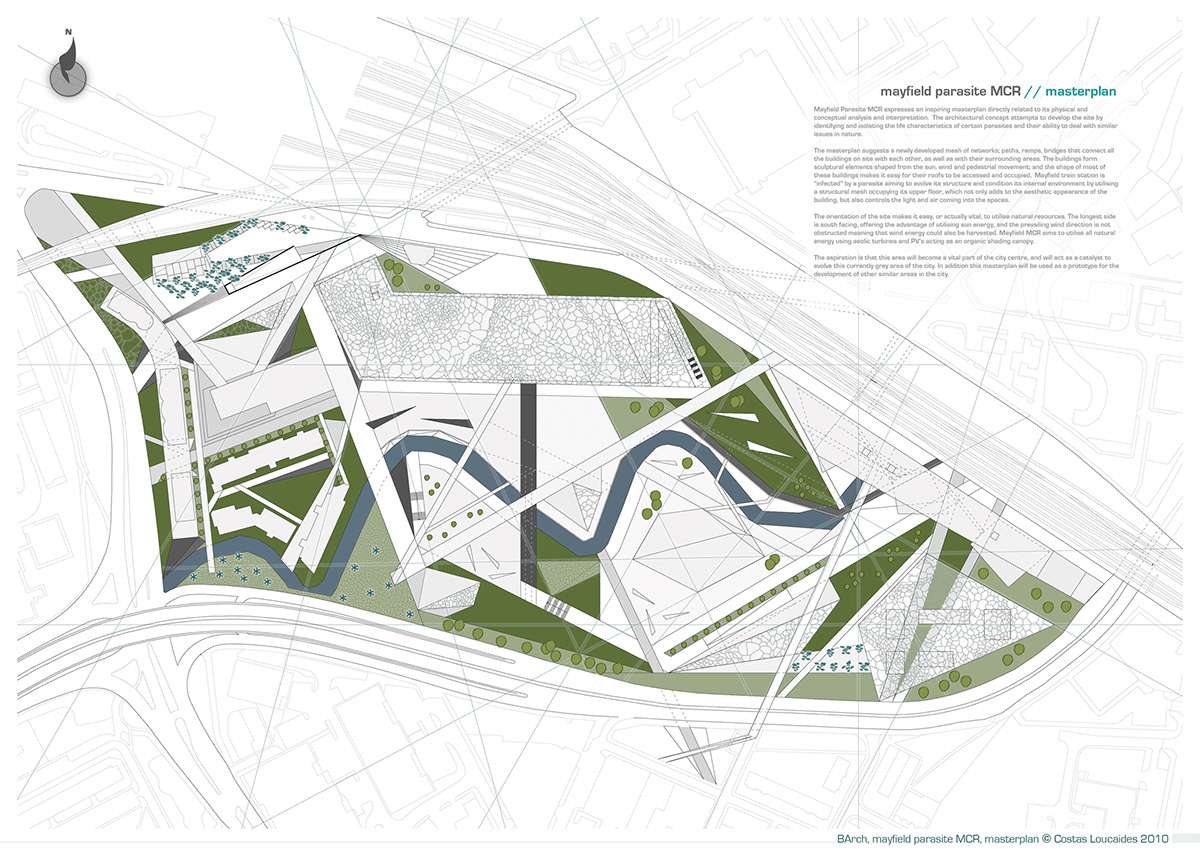
Mayfield Parasite MCR - Masterplan


